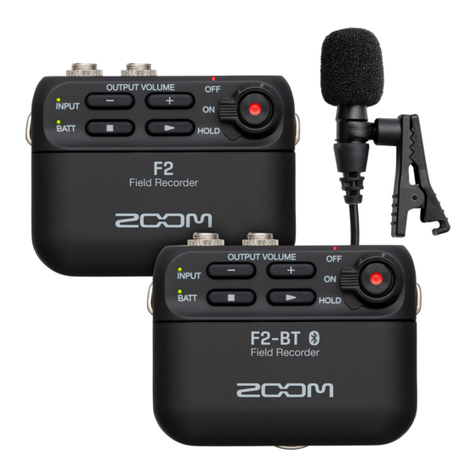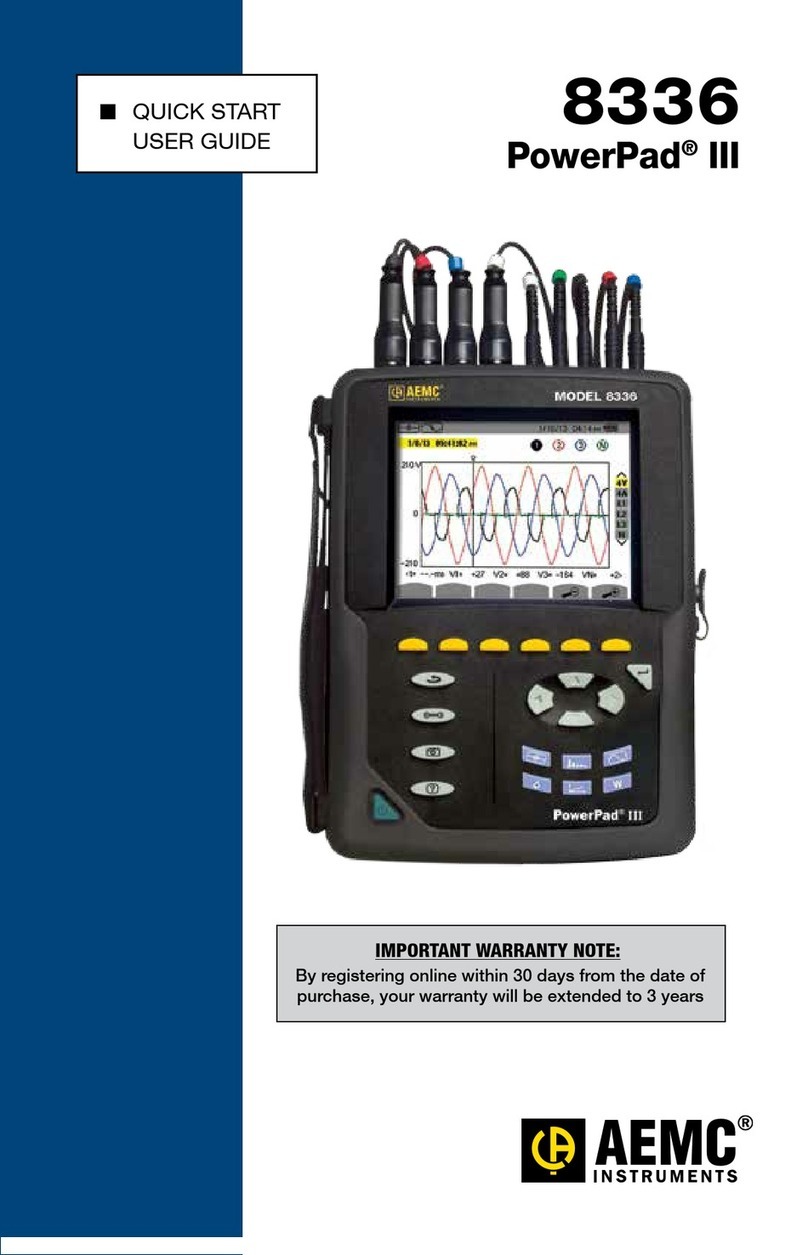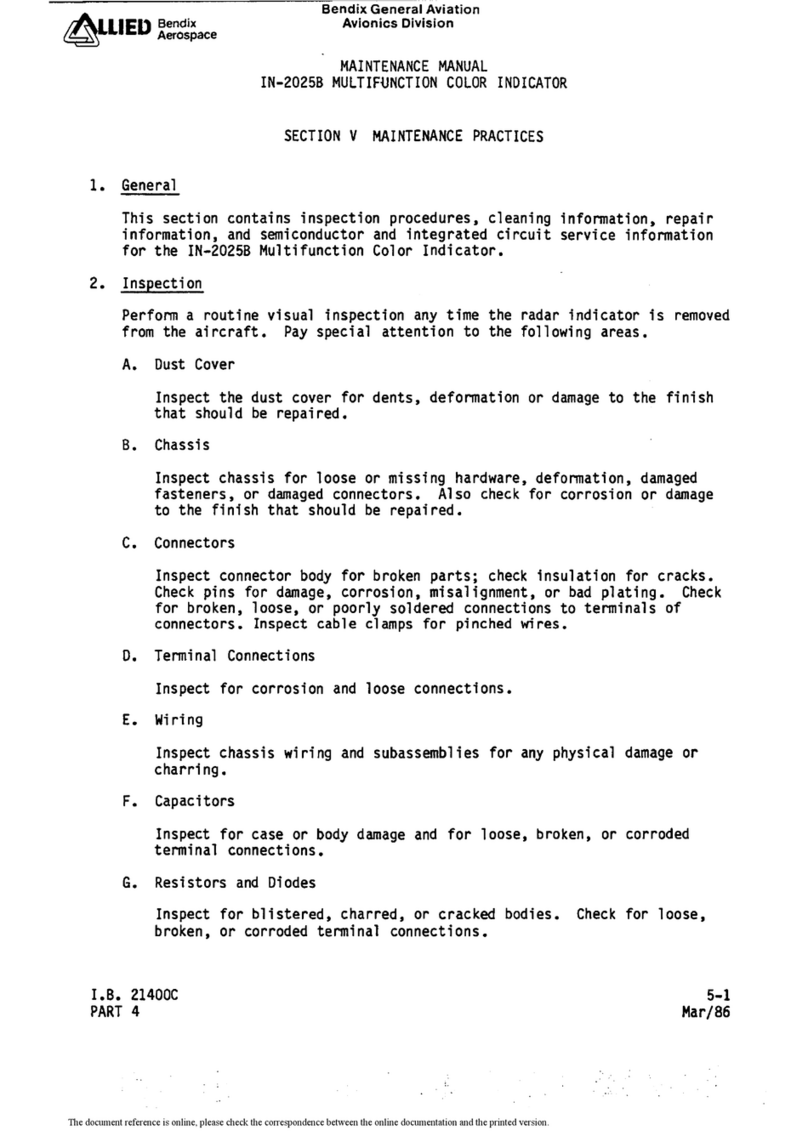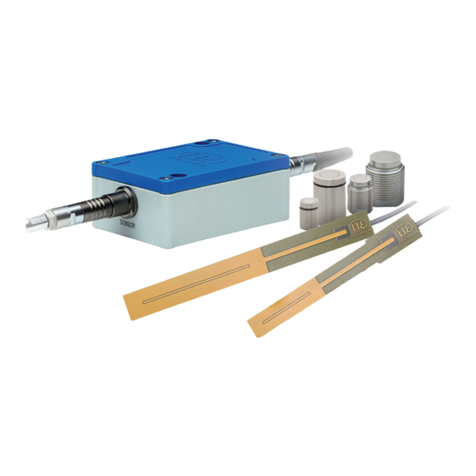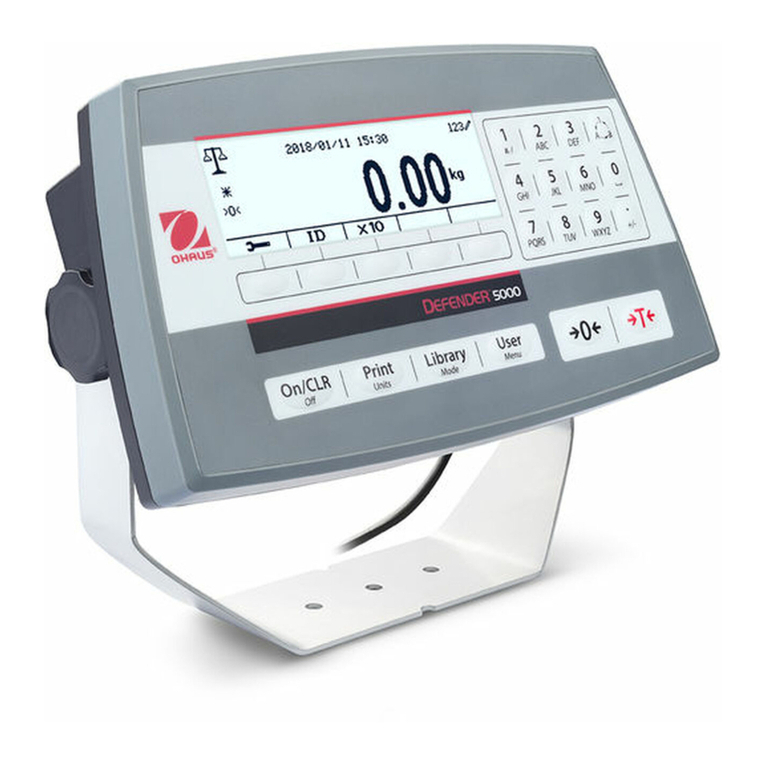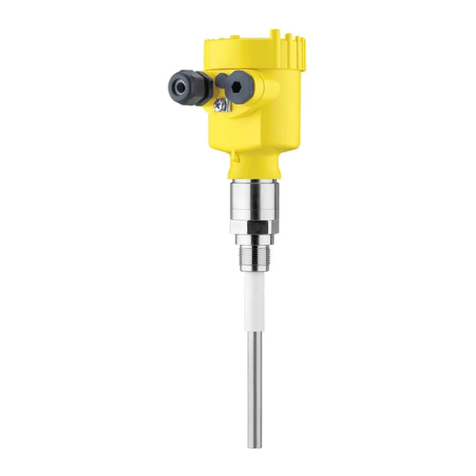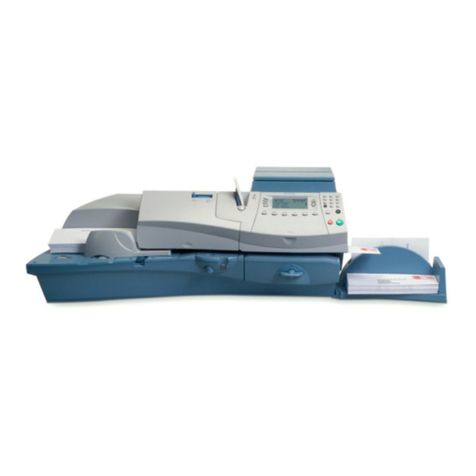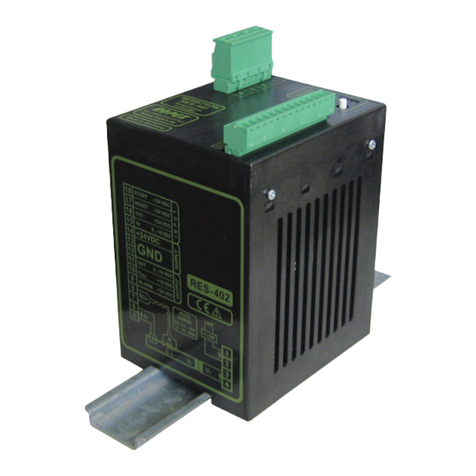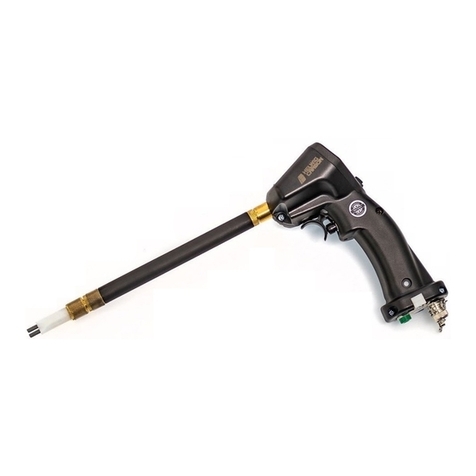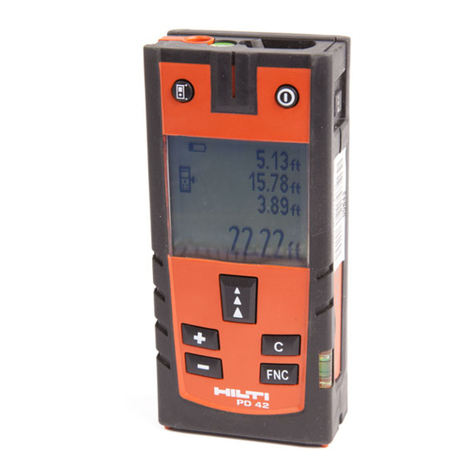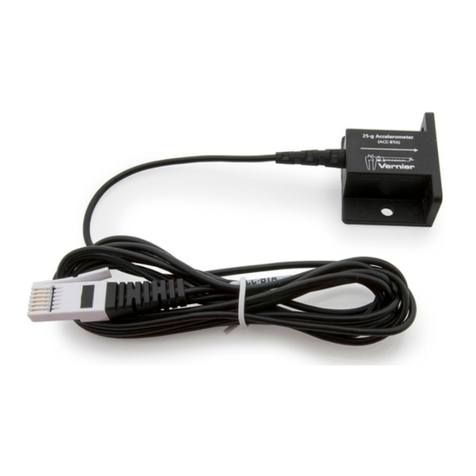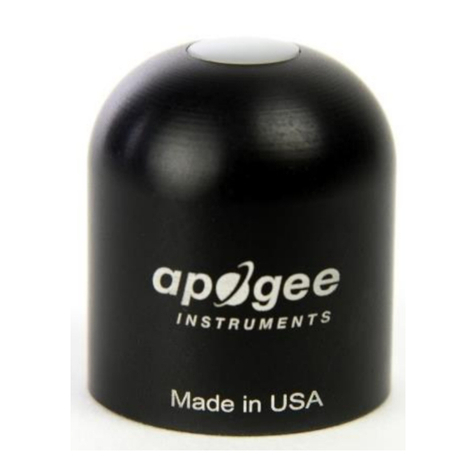Specac Silver Gate User manual

Silver Gate™Evolution
Single Reflection ATR System
User Manual
2I-10680 Issue 3


Silver Gate™Evolution
Single Reflection ATR System
User Manual
2I-10680 Issue 3

User Manual
2
Silver Gate™ Evolution ATR System
SILVER GATE™ EVOLUTION ATR SYSTEM - P/N GS10680 SERIES
USER MANUAL
1.
I
NTRODUCTION
................................................................................. 4
2.
U
NPACKING AND
C
HECKLIST
............................................................. 6
3.
I
NSTALLATION
V
IA
B
ENCH ARK
™
B
ASEPLATE
................................... 7
4.
A
LIGN ENT
P
ROCEDURE
.................................................................. 8
F
ITTING OF
T
HE
ATR
C
RYSTAL TOP
P
LATE TO THE
O
PTICAL
U
NIT
...... 9
A
LIGN ENT
................................................................................... 11
5.
F
ITTING
A
CCESSORIES TO THE
S
ILVER
G
ATE
™
ATR
O
PTICAL
U
NIT
.. 14
F
ITTING A
P
OLARIZER
.................................................................... 14
B
ENCH ARK
™
P
OLARIZER
R
OTATOR
OUNT
P/N
GS12510 .......... 15
P
URGING THE
O
PTICAL
U
NIT
.......................................................... 16
F
ITTING THE
P
URGE
B
ELLOWS
P/N
GS10707 ................................ 17
6.
A
NVIL OPTIONS
............................................................................... 18
P
ELLET
A
NVIL
P/N
GS10532 ......................................................... 18
S
TAINLESS STEEL
A
NVIL
P/N
GS10567 .......................................... 18
7.
S
A PLING
U
SING THE
S
ILVER
G
ATE
™
A
CCESSORY
......................... 19
G
ENERAL
P
INCIPLES
...................................................................... 19
F
EATURES OF THE
B
RIDGE AND
C
LA P
A
NVIL
A
SSE BLY
................ 19
T
ORQUE
L
I ITER
S
CREW
A
SSE BLY
.............................................. 20
Q
UICK
L
OCK AND
R
ELEASE
ECHANIS
......................................... 21
S
TAY
U
P
D
EVICE
........................................................................... 21
I
PORTANT
N
OTES
F
OR
U
SAGE
..................................................... 21
P
REPARING
T
HE
S
ILVER
G
ATE
™
A
CCESSORY
F
OR
A
NALYSIS
........ 22
C
OLLECTING A
B
ACKGROUND
S
PECTRU
....................................... 22
C
ONTA INATION
C
HECK
O
N
A
NVIL
................................................. 23
C
OLLECTING
ATR
S
PECTRA OF
P
OWDER
S
A PLES
........................ 23

Sil er Gate™ E olution ATR System
3
C
OLLECTING
ATR
S
PECTRA OF
F
LAT
S
OLID SA PLES
..................... 25
C
OLLECTING
ATR
S
PECTRA OF
P
ELLET
/B
EAD
S
A PLES
................. 26
C
OLLECTING
ATR
S
PECTRA OF
F
IBER
S
A PLES
............................. 28
C
OLLECTING
ATR
S
PECTRA
O
F
L
IQUIDS AND
P
ASTE
S
A PLES
........ 29
N
OTES
O
N
C
LEANING
.................................................................... 33
8.
S
ILVER
G
ATE
™
ATR
"B
UBBLE
N
U BER
"
I
DENTIFICATION
L
IST
......... 34
9.
S
ILVER
G
ATE
™
ATR
A
CCESSORY
S
PARE PARTS
............................. 35
10.
S
ILVER
G
ATE
™
ATR
T
ECHNICAL
S
PECIFICATIONS
......................... 36
11.
S
ILVER
G
ATE
™
ATR
S
ERIAL
N
U BERS
........................................ 37
© Apr 2016 Specac Ltd. All rights reserved.
Silver Gate™ and Benchmark™ are trademarks of
Specac Ltd. Other product names that may be mentioned herein
may be trademarks of their respective owners.

User Manual
4
1. Introduction
Thank you for buying a Specac product. We trust it will provide you
with invaluable and excellent service in use.
The Silver Gate™ Evolution Single Reflection ATR is designed for the
quantitative and qualitative analysis of solids, powders, liquids, pastes
and gum-like samples. Sufficient sample is required to cover an ATR
crystal surface of 7mm diameter.
The Silver Gate™ ATR accessory can be configured for use starting
with the optical unit and supplied with or without a bridge and clamp
anvil assembly. There is a choice of zinc selenide (ZnSe), germanium
(Ge) or silicon (Si) flat ATR crystal top plate assemblies and ZnSe or
Ge recessed ATR crystal top plate assemblies to be used on either of
the optical unit assemblies (with or without a bridge.) The ATR crystals
are glue mounted into their respective ATR crystal top plate
assemblies.
A complete Silver Gate™ ATR system consists of an ATR flat or
recessed crystal top plate assembly with a ZnSe or Ge crystal at 45°
incident angle option fitted to an optical unit with a bridge and clamp
anvil assembly. This whole assembly is mounted into a spectrometer
via a Benchmark™ type baseplate for correct positioning of the
accessory to maximize for an optical throughput signal. The ATR
crystal top plate assemblies are interchangeable for placing on a
common optical unit.
The bridge and clamp anvil assembly can be fitted to the Silver Gate™
optical unit as an option if desired. The simplest Silver Gate™ ATR
Accessory configuration is by use of a flat or recessed ATR crystal top
plate assembly on the optical unit without a bridge and clamp anvil
assembly. This combination of parts can be used for the analysis of
liquids and pastes.
For sampling of solids and powders, the bridge and clamp anvil
assembly is fitted onto the Silver Gate™ optical unit. The bridge part
carries a torque limiter screw assembly that provides for a consistent

Sil er Gate™ E olution ATR System
5
and reproducible load to an anvil compression head to enable excellent
close contact of a solid sample with the ATR crystal.
In operation the entire torque screw limiter assembly knob is rotated
until a sufficient load and hence pressure has been applied to the
sample. The torque screw limiter assembly knob will continue to rotate
when the set load is reached, but the drive connection slips and no
more force will be applied. The black colored cover cap with the white
“cross” mark on top of the knob acts as the indicator when the set
applied load is reached in ceasing to rotate. The flat ATR crystal top
plate assemblies are best suited to be used in combination with the
bridge and clamp anvil assembly for solid or powder sample types,
although if the sample is small enough, the recessed ATR crystal top
plate assembly could be used instead.
When using the bridge and clamping mechanism for pressure
application, the compression head anvil does not rotate against the
sample. This ensures that heat is not generated by friction which may
cause changes to the sample, and the sample is not displaced from the
correct sampling position.
The transfer optics unit of the Silver Gate™ ATR consists of mirrors
and optical components to achieve maximum throughput for each flat
or recessed ATR crystal top plate assembly.
As standard a volatiles cover (P/N GS10503) and purge bellows (P/N
GS10707) are supplied with the optical unit without a bridge assembly.
In addition to these parts, a standard stainless steel pressure head
anvil (P/N GS10567) and pellet anvil (P/N GS10532) are also provided
along with the optical unit with a bridge assembly.

User Manual
6
2. Unpackin and Checklist
The Silver Gate™ ATR accessory is provided in its own carry case.
Depending on which Silver Gate™ ATR system has been ordered will
determine the items to check on delivery.
Please check for the following.
1 Silver Gate™ ATR optical unit without bridge and clamp anvil
assembly. - This will include:-
1 Volatiles cover P/N GS10503.
1 Pair of purge bellows P/N GS10707.
1 Silver Gate™ ATR optical unit with bridge and clamp anvil assembly.
This will include:-
1 Volatiles cover P/N GS10503.
1 Pair of purge bellows P/N GS10707.
1 Stainless steel flat anvil P/N GS10567.
1 Pellet anvil P/N GS10532.
With either optical unit assembly:-
1 ATR crystal top plate assembly (choice of ZnSe, Ge or Si flat, or
ZnSe, Ge or Si recessed crystal top plate assembly.
(Any additional ATR crystal top plates ordered with the accessory.)
1 Ball driver 3.0mm
1 Allen key 2.0mm
1 Benchmark™ baseplate for your FTIR spectrometer.
1 Instruction manual for Benchmark™ baseplate installation.
1 Essential Spares Kit of parts (P/N GS10685)
Carefully remove your Silver Gate™ ATR accessory and any ATR
crystal top plates from the carry case in readiness for use.

Sil er Gate™ E olution ATR System
7
3. Installation Via Benchmark™ Baseplate
Figure 1. Sil er Gate™ ATR Accessory – Optical Unit with Bridge and
Clamp An il Assembly and Flat ATR Crystal Top Plate Assembly
The Silver Gate™ ATR is supported on a Benchmark™ baseplate
when installed into a spectrometer. The Benchmark™ baseplate has
three support pillars (one flat support pillar towards the rear and two at
the front with location pins) and a fourth front central pillar into which
the fixing thumb screw (1) of the Silver Gate™ optical unit is tightened.
Note: It is normally best to install the Benchmark™ baseplate in
the spectrometer first before locating the Silver Gate™ ATR
accessory.
Fixing holes and studs in the Benchmark™ baseplate will vary
dependant on the make and model of the spectrometer for which the
Silver Gate™ is to be installed. For details on how to install your
accessory in the spectrometer, refer to the Benchmark™ baseplate
Installation Guide/User anual supplied.
1

User Manual
8
4. Ali nment Procedure
When you have installed the Silver Gate™ ATR accessory into your
spectrometer on its appropriate Benchmark™ baseplate, you should
check for alignment of the accessory. An overall spectral throughput of
between 20% and 55% for ZnSe and Ge ATR flat or recessed crystal
top plate assemblies should be achievable. The Silver Gate™ ATR will
be supplied having a preliminary factory alignment. On installation,
some transmitted energy should be recorded on the spectrometers
energy/light throughput to detector monitoring system, but it will be
necessary to maximize the optical throughput for any specific
spectrometer by adjusting the mirrors in the optical unit of the Silver
Gate™ accessory. To carry out any alignment procedure one of the
Silver Gate™ ATR flat or recessed crystal top plate assemblies must
be fitted to the optical unit.
Fitting of the ATR Crystal Top Plate to the Optical Unit
Six different versions of Silver Gate™ ATR crystal top plate assemblies
can be fitted to the optical unit. They are:-
ZnSe flat crystal top plate assembly, P/N GS10683-1.
Ge flat crystal top plate assembly, P/N GS10683-2.
Si flat crystal top plate assembly, P/N GS10683-3.
ZnSe recessed crystal top plate assembly, P/N GS10684-1.
Ge recessed crystal top plate assembly, P/N GS10684-2.
Si recessed crystal top plate assembly, P/N GS10684-3.
The flat and recessed ATR crystal top plate assemblies are fitted to the
top plate area of the Silver Gate™ optical unit by location holes (2) to
location pins (3) and held in place by magnetic catches (4) to counter
plate fixings (5). (Please see Figures 2, 3, 4 and 5.) Top views of the
flat and recessed ATR crystal top plate assemblies using the ZnSe
crystal as examples are Figures 2 and 3. (Ge and Si top plates are
similar.) The underside view of either the flat or recessed ATR crystal
top plate assembly is shown as Figure 4. The top surface (without
bridge) on the optical unit where to fit the ATR top plates is shown in
Figure 5.

Sil er Gate™ E olution ATR System
9
Figure 2. Top iew of Sil er Gate™ ZnSe Flat ATR Crystal
Top Plate Assembly
Figure 3. Top iew of Sil er Gate™ ZnSe Recessed ATR Crystal
Top Plate Assembly
ATR Crystal
ATR Crystal

User Manual
10
Figure 4. Underside iew of Sil er Gate™ ZnSe Flat or Recessed
ATR Crystal Top Plate Assembly
Figure 5. Top iew of Sil er Gate™ Optical Unit without Bridge
2
4
5
3
6 7

Sil er Gate™ E olution ATR System
11
The flat and recessed ATR crystal top plate assemblies will fit into the
top surface area of the Silver Gate™ accessory in one orientation only.
Align the location holes (2) with the location pins (3). The location slot
(2) must be towards the front of the Silver Gate™ Accessory where the
thumbscrew fixing (1) is located. Allow the three magnetic catches (4)
to engage with their three counter plate fixings (5) to hold the ATR
crystal top plate securely in position. To remove and swap over with
any other ATR crystal top plate assembly, just pull up on the ATR
crystal top plate to release the magnetic catches.
Alignment
With an ATR crystal top plate assembly in position on the optical unit
and when the whole is installed in the spectrometer on an appropriate
Benchmark™ baseplate, the Silver Gate™ Accessory can be finely
aligned. The optical unit cover plate (6) is removed by undoing the
cover plate thumb screws (7) (see Figure 5.) to gain access to the
mirror adjustment screws (8) and (9).
Figure 6. Front iew of Sil er Gate™ with a Flat ATR Crystal
Top Plate and Optical Unit Co er remo ed to show Mirrors
8 9
Mirror
M1
Mirror
M2

User Manual
12
The mirrors M1 and M2 in the optical unit can be adjusted for rotation
and tilt. (See Figure 6.) The 4 cap head screw (8) allows for rotation
of the mirror and the 4 x 12mm grub screw with a cone point (9)
allows for tilt of the mirror, as fixed to its mirror carriage assembly.
The mirror optical set up is symmetrical so it does not matter which
direction the beam passes through the optical unit from source to
detector. (Left to right or right to left as seen from the front of the optical
unit.) However, to align your Silver Gate™ accessory you need to
follow the alignment instructions knowing whether your spectrometer is
a left to right or right to left beam (source to detector) configuration.
The instructions below have been written for a left to right beam
configuration spectrometer.
Tip: If the energy reading on the instrument monitor goes to ero
while making any of the adjustments always bring it back with the
same adjustment before proceeding further. It is always best to
start alignment from the output mirror (the one nearest the
detector). In these instructions it is assumed M2 is the output
mirror. If your output mirror is M1 follow instructions substituting
M1 with M2 (and vice versa.)
1. Using the Ball driver tool in screw (8) of mirror M2 very gently
adjust the rotational movement of the mirror to achieve maximum
energy.
2. Adjust mirror M2 tilt position by inserting the smaller Allen key into
grubscrew (9) and turning to peak the energy.
Important : Turning the Allen key too far anti-clockwise will cause the
grubscrew (9) to dislodge from the back of the mirror (M2).
If this accidentally happens, turn the Allen key a full circle
in the same direction to dislodge the screw further and
free it. (Do not remove it). Next, push the spring mounted
mirror (M2) away from the black anodi ed mirror mount
and turn the Allen key clockwise until the screw is re-set
against the rear of the spring.

Sil er Gate™ E olution ATR System
13
3. aximize the energy by adjusting the rotation and tilt movement
screws (8) and (9) respectively of mirror M1. (See Figure 6.)
4. Repeat the rotation and tilt adjustments as in steps 2 – 4 until
maximum transmission is achieved and then replace the front
cover plate (6) and tighten the cover plate thumb screws (7).
5. If the Benchmark™ baseplate is mounted on a rail or is movable in
the spectrometer, move the Silver Gate™ ATR Accessory on the
Benchmark™ baseplate to find the best position where the
transmission is at a maximum. Now firmly secure the Benchmark™
baseplate in this position.
Note: In some spectrometers it may be necessary to remove the
Silver Gate™ optical unit before securing the baseplate. Where
this is the case, ensure that the Benchmark™ baseplate does
not move when removing the Silver Gate™ optical unit.

User Manual
14
5. Fittin Accessories to the Silver Gate™ ATR
Optical Unit
When the Silver Gate Single Reflection ATR has been installed and
aligned in the spectrometer you have the options of fitting a polarizer
and/or purging the ATR optical unit.
Figure 7. Aperture Ports and Purge Connections on the
Sil er Gate™ Optical Unit
Fitting a Polarizer
Specac P/N GS12000 Series Polarizers can be fitted to the apertures
(10) of the optical unit. The polarizers push fit in these apertures and
can be rotated to the desired angular orientation. The polarizer will
transmit at a maximum (perpendicular component of the polarized light)
when it is mounted so that the notch slot in the polarizer holder ring is
in the vertical plane. Fitting the polarizer to either aperture of the optical
unit will have the same effect.
Note: Fit a polari er where required before purging the system.
11
10

Sil er Gate™ E olution ATR System
15
Benchmark™ Baseplate Compatible Accessory Polariser Rotator
Mount P/N GS12510
In place of the GS12000 Series polariser, a specific Benchmark™
baseplate compatible accessory polariser rotator mount can be fitted to
the aperture ports (10) of the Silver Gate™ optical unit.
The polarizer mount GS12510 is a
rotatable mount that accepts the
Specac range of GS57010 Series,
38mm circular aperture, ring
mounted polarizers. When a
GS50710 Series polarizer has
been installed into the GS12510
mount, it can be rotated for a
particular angular degree of
polarized light by adjustment of an
outer rotating ring on the polarizer
mount itself.
Figure 8. GS12510 Polarizer Mount
The polarizer mount GS12510 can be used when polarized light
experimentation is to be carried out using any Benchmark™ baseplate
compatible accessory, particularly if there is limited space within a
spectrometer sample compartment. The standard aperture ports of the
Benchmark™ baseplate compatible optical units (as item 10 for the
Silver Gate™ optical unit), will accept a GS12000 Series polarizer. To
rotate this type of polarizer, it must be removed from the aperture port
and turned to align with the indicating grooves in the aperture port ring
for either parallel or perpendicular polarization and then re-inserted.
There is a risk of marking the polarizer substrate from fingerprints etc,
whenever placing the polarizer into, or removing it, from the aperture
mounting ports. Therefore, if continual changing of the polarizer
angular orientation is required, use of an appropriate GS57010 Series
polarizer within the GS12510 mount may help to minimize any risk of
marking/damage if using a GS12000 Series polarizer that has to be
removed from the aperture port and rotated by hand.

User Manual
16
Purging the Optical Unit
The Silver Gate™ ATR Accessory is fitted with purge ports (11). The
purge port connections are fitted with rubber caps. To purge the optical
unit the rubber caps are removed and a suitable size of flexible rubber
tubing can be pushed over the ¼” hose connection fittings at the purge
ports to enable the unit to be filled with a purge gas, e.g. Nitrogen.
To enable the optical unit to be purged it is necessary to fit the flexible
purge bellows (12) to the optical unit at the aperture ports (10). (See
Figure 9.) The purge bellows grip fit around the circumference of the
aperture ports and bridge any gap between the optical unit and the
spectrometer sample compartment bulkheads from the source and to
the detector. If the gap/distance between the optical unit and bulkhead
is small, the purge bellows can be cut to size. It is best to cut all the
way around and in between one of the ridged grooves in the bellow
moulding itself.
Figure 9.
Sil er Gate™ ATR Accessory – Optical Unit with Bridge and
Clamp An il Assembly, Flat ATR Crystal Top Plate Assembly
and Purge Bellows
12
Faces of bellows
to be flush fit
with bulkhead

Sil er Gate™ E olution ATR System
17
Tip: It is recommended that purge bellows are fitted during use to
help stabili e the spectrometer/instrument background even if
purging is not to be carried out.
Fitting the Purge Bellows P/N GS10707
1. With the Benchmark™ baseplate secured and the Silver Gate™
Accessory in position, measure the distance between the
spectrometer source and detector bulkhead/side walls and the flat
end faces of the Silver Gate™ Optical Unit. (This is dimension
“‘X”).
2. Using a sharp razor, cut lengths of the flexible purge bellows (12)
which are equivalent to the measured length (“X”) allowing an
additional 10mm for each.
Tip : It is easier to cut the purge tube between the ridged grooves.
3. Unscrew the Silver Gate™ Optical Unit fixing thumb screw (1) and
remove the Silver Gate™ ATR Accessory from the sample
compartment.
Note: Fit a polari er at this stage if required. (GS12000 Series or
GS12510 Benchmark™ Compatible Accessory Polari er Mount)
4. Fit the flexible purge bellows (12) over both end apertures on the
optical unit and compress sufficiently to enable the whole assembly
to fit into the spectrometer.
5. Refit the Silver Gate™ ATR Accessory with the fitted purge bellows
to the Benchmark™ baseplate. Ensure the purge bellows (12) are
not obstructing the optical beam and then retighten the fixing
thumb screw (1) to secure the Silver Gate™ ATR Accessory back
onto the Benchmark™ baseplate.

User Manual
18
6. Anvil Options
Choice of An ils and their Uses
There are two different compression head anvils (13) that can be used
with the Silver Gate™ ATR Accessory when fitted with the bridge and
clamp anvil assembly. The types of anvil and their uses can be
tabulated as follows:-
An il
Description
Sample Type / Use
GS10532 Pellet Polymer beads, softish irregular
shaped solids
GS10567 Stainless steel flat Solids and powders
Pellet An il P/N GS10532 (Figure 10.)
This anvil is made of stainless steel and has a
concave recess designed to take round shaped
samples such as polymer beads. Relatively soft
irregular shaped samples can be used with this
anvil on any of the Silver Gate™ ATR crystal
top plate assemblies.
Figure 10
St/Steel Flat An il P/N GS10567 (Figure 11.)
The stainless steel anvil P/N GS10567 should
be used generally for all solid and powder
samples to bring the sample into good contact
with the ZnSe or Ge crystal for any of the ATR
crystal top plate assemblies. Figure 11
Tip: When placing an anvil (13) into position on the end of the clamp
head pressure pin (14) on the bridge, push the hollow depression
of the anvil on with a rotational movement to ensure it makes a
compression fit with the retaining O-ring. Ensure the anvil pressing
face is level and parallel to the bridge (15). (See Figure 12.)
Table of contents

